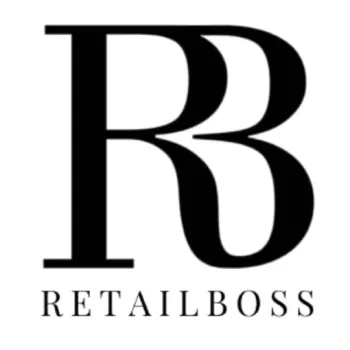As we stand on the brink of a “resale boom” in 2024, more retailers are integrating recommerce strategies, including resale, rental, and subscription models, into their operations. Recommerce stands for the buying and selling of pre-owned goods, it encompasses the reselling, renting, refilling, repairing, or reusing of goods. It is estimated by Barclays to be worth nearly £7 billion ($8.9 billion) in the United Kingdom alone, accounting for 1.6% of the total retail market, with a projection to increase to £82 billion ($104.3 billion) by 2030. In comparison, the recommerce market in the U.S. was estimated be worth more than 188 billion U.S. dollars, with a forecast to get close to 276 billion dollars by 2028.
Younger millennials (aged 25-34) are the largest contributors to the overall Recommerce Economy, estimated to have spent £1.95 billion on second-hand items in the past year and over a quarter of the total (28%). Linda Weston, Managing Director at Barclaycard Payments, highlights the opportunity for the UK economy and retailers to capitalize on sustainable shopping trends. As such, certain luxury brands, such as Gucci, Rolex, and Burberry, have embraced recommerce and partnered with existing resale platforms or created their own. Let’s dive into the factors driving this growth, the increasing demand among younger generations, and how major retailers adapt to this retail trend.
Key findings of Barclays report (UK)
- Over four in ten (44%) consumers buy more second-hand items than a year ago.
- A further 57% of consumers report that their recommerce shopping behavior has remained consistent over the past year.
- Gen-Z adults (aged 18-24) are particularly motivated by shopping second-hand, viewing pre-loved items as ‘more fashionable’ (30%) and unique (31%).
- Rising living costs are the main motivator, with 62% of consumers citing them as a reason for their shift towards recommerce.
- The desire for more sustainable shopping practices motivates 43% of consumers.
- 22% of consumers are motivated by the desire to access items usually financially out of reach, such as designer goods.
Market Growth and Projections
The recommerce market has experienced significant growth over recent years. In 2021, the market value soared to over $160 billion, up from $140 billion in 2020. By 2032, fashion recommerce alone is expected to reach a staggering $652 billion, with apparel resale projected to hit $64 billion by 2024. This rapid expansion is not confined to the United States; globally, the fashion recommerce market is valued at over $72 billion.
In the U.S., the recommerce sector generates over $188 billion annually. This growth reflects a broader shift among consumers towards more sustainable and cost-conscious shopping habits, facilitated by platforms such as Vinted, Vestiaire, and Depop.
Sector Contributions:
- Cars and Vehicles:
- Contribute 33.2% to the recommerce economy, valued at £2.32 billion.
- Clothing and Accessories:
- Account for 17.3%, valued at £1.22 billion.
- Entertainment and Electronics:
- Make up 16%, valued at £1.16 billion.
- Home Décor and Houseware:
- Represent 12.3%, valued at £861 million.
- Baby Care and Children’s Market:
- Contribute 7.8%, valued at £544 million.
Drivers of Recommerce Growth
Several key factors are propelling the rise of recommerce:
- Environmental Concerns: Increasing environmental sustainability awareness drives consumers to opt for secondhand items. 45% of millennials and Gen Z refuse to purchase from brands and retailers that are not committed to sustainability.
- Economic Considerations: The economic benefits of buying and selling secondhand items cannot be overstated. Consumers can save money by purchasing used goods, while sellers can earn extra income by offloading items they no longer need.
- Decluttering: Another significant driver is the desire to declutter and simplify living spaces. As people seek to reduce the number of possessions they own, recommerce provides a convenient outlet for selling unwanted items.
- Unique Finds: The appeal of finding unique, vintage, or discontinued items also fuels the recommerce market. Shoppers often turn to secondhand platforms to discover one-of-a-kind pieces unavailable in traditional retail stores.
Increased Demand Among Younger Generations
Generation Z and Millennials are at the forefront of the recommerce movement. According to a survey, 80% of Gen Z and 78% of Millennials have purchased pre-owned items within the past year. For these younger consumers, sustainability is a top priority, with 62% expressing a preference for buying from sustainable brands.
However, the shift towards sustainable shopping is not limited to younger generations. A recent survey indicates that consumers across all ages increasingly consider sustainability in their purchasing decisions. This widespread change underscores the importance of recommerce for retailers aiming to stay relevant and successful in today’s market.
Demographic Contributions:
- 25-34 Year Olds:
- Contribute £1.95 billion, making up 27.9% of the total recommerce economy.
- 35-44 Year Olds:
- Contribute £1.58 billion, accounting for 22.6%.
- 18-24 Year Olds:
- Contribute £1.187 billion, representing 17%.
- 45-54 Year Olds:
- Contribute £883 million, making up 12.6%.
- 55-64 Year Olds:
- Contribute £790 million, accounting for 11.3%.
- 65+ Year Olds:
- Contribute £602 million, representing 8.6%.
Major Retailers Embracing Recommerce

Several major retailers are dedicating more floor space to resale and rental items. Luxury brands are increasingly exploring non-retail channels to engage with their customers. One such innovative approach is the creation of “third spaces”—environments that are neither home nor work but offer a unique, immersive experience. These spaces allow brands to connect with consumers on a deeper level, fostering a sense of community and belonging. Notable examples include:
- LVMH: Introduced Nona Source, the first online resale platform for materials. This initiative allows the company to resell unused fabrics and leathers from their fashion houses, promoting sustainability and reducing waste.
- Selfridges: This luxury department store encourages customers to sell goods on its platform for store credit through its ReSellfridges initiative.
- H&M: Since 2013, H&M’s “Let’s Close the Loop” program has promoted clothing recycling and resale. H&M has also launched a pre-loved concept in its Regent Street flagship store in London, dedicated to second-hand clothes and accessories.
- Patagonia: Patagonia’s Worn Wear program offers up to $100 in store credit for returned items, emphasizing the brand’s commitment to sustainability.
- Levi’s: Launched in 2020, Levi’s SecondHand program allows customers to trade in their old jeans for store credit.
- REI: The Good & Used program, initiated in 2018, focuses on reselling outdoor gear.
- Eileen Fisher: Eileen Fisher Renew, established in 2009, promotes the resale of gently used clothing.
These initiatives make it easier for consumers to trade in products while promoting sustainability. However, retailers face challenges such as setting fair resale prices, managing the costs of buying back items, and ensuring the quality of secondhand goods.
| Company | Recommerce Initiative | Year Launched |
|---|---|---|
| H&M | Let’s Close the Loop | 2013 |
| Patagonia | Worn Wear | 2013 |
| Levi’s | SecondHand | 2020 |
| REI | Good & Used | 2018 |
| Eileen Fisher | Renew | 2009 |
Future Outlook
As recommerce continues to grow, it is expected to reach nearly $245 billion by 2025. As luxury brands and retailers increasingly embrace the resale market, they diversify their product categories and attract a new segment of environmentally conscious consumers. The introduction of platforms like LVMH’s Nona Source exemplifies this trend, showcasing the potential for innovation within the industry. As the market continues to evolve, the integration of recommerce into luxury retail will likely become a cornerstone of future retail strategies, offering both economic and environmental benefits.

















